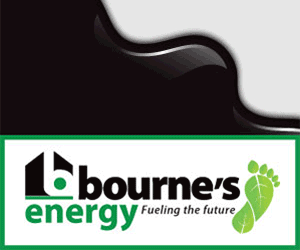Utility-scale, is, unfortunately, a high impact/low return resource
for Vermont. Solar, on the other hand, has the potential to be a low
impact/high return resource, if sited and utilized appropriately.
WIND RESOURCE
Wind is a viable resource in places with big, flat expanses: the West, Midwest
and offshore. Several Midwest states have more than 600 gigawatts of
wind potential - Vermont has just six. The wind in the Midwest can be
harnessed in large arrays, efficiently sited on flat fields.
Solar,
meanwhile, can be to Vermont what wind is to the Midwest. The total raw
solar resource here is almost 4,000 gigawatts. Just using a fraction of
that solar potential would create a significant renewable energy
resource for the entire state. Solar is scalable and can be sited in
locations that are already developed.
It would take 700 to 1,200
turbines erected on 200 to 300 miles of ridgeline to do the same thing
with wind. That would require many more miles of roads in rugged,
undeveloped terrain and clearing many acres of alpine forest. Meanwhile
we can create an enormous amount of solar electricity by using about 0.7
percent of all of Vermont's open farmland - and that figure can be
further reduced by incorporating parking lots and other open spaces
already being used.
Being installed closer to load destinations,
solar generation requires no new power lines. And, if a solar
installation proves undesirable, it is easily removed or relocated.
Imagine trying to get those towers off the Northfield Ridge.
FINANCIALLY VIABLE?
Is solar financially
viable? Increasingly, the answer is yes. Based on data from industry
analyst Paula Mints, MIT scientist Immanuel Sachs and the U.S.
Department of Energy, solar will be directly cost competitive with
retail electricity by 2015 or sooner.
For all these reasons,
more than 1,200 solar projects have been built in Vermont in recent
years with little environmental damage and less controversy. This is not
to say that solar is infallible; as we know here in The Valley, solar
has to be "done right" just like any other kind of development. FNR
supports the discussions currently underway to develop standards that
will guide future solar installations in our communities to ensure they
are responsible and appropriate.
DIFFERENT FUTURES
Wind
and solar have very different futures. To increase production,
industrial wind plants are becoming even bigger, more expensive and more
destructive. Solar, on the other hand, is going in just the opposite direction: smaller, cheaper and less invasive.
It
is not the job of Citizens Wind to tell us these facts and others. As a
business, their concerns are focused solely on profit and developing
what they see as a resource - and we see as our home. It is our job to
speak out for the Mad River Valley's character, quality of life, economy
and heritage.
Citizens Wind either does not understand or does
not care how Vermont town government works. While their staff has stated
on the record that Citizens Wind would depart if the Northfield Ridge
wind project was unwelcome, the Waitsfield Planning Commission, after
several well-attended meetings, has made it clear that for now the Town
Plan's prohibition on ridge-top development will remain in place. It is
unfortunate that Citizens Wind staff have stated that they "don't think
that represents the majority opinion." We hope that, should they choose
to continue this conversation, they will have more respect for our local
government.
Deciding whether to develop the Northfield Ridge
would be a tougher choice if it could make an important contribution to
Vermont's and the nation's energy needs. But it cannot. We all cherish
this magical valley and the way of life it fosters. And what we all
agree we need, for now and the future, are better ways of producing the
electricity that we use, ways that are not as destructive to the entire
planet and to our small, unique corner of it.
Richards is a member of Friends of the Northfield Ridge.






